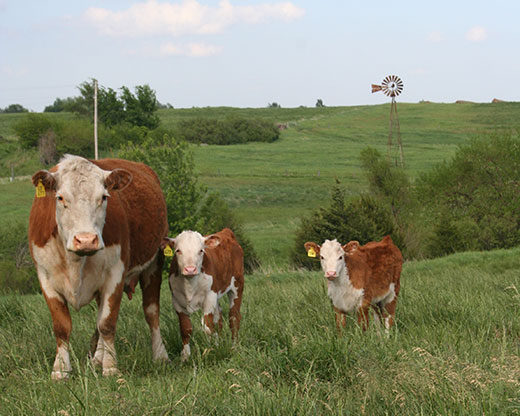
K-State veterinarian Gregg Hanzlicek urges producers to review their herd's vaccination and parasite control programs before summer.
K-State veterinarian shares tips to prepare cattle for summer
Hanzlicek said vaccinations, ear tags are key to maintaining herd health
April 8, 2022
By Shelby Varner, K-State Research and Extension news service
MANHATTAN, Kan. – Kansas State University veterinarian Gregg Hanzlicek is urging beef cattle producers to review their herd’s vaccination and parasite control program as summer approaches.
He said vaccinations should be given to protect the cows against all the major reproductive infectious diseases before breeding season, including IBR (infectious bovine rhinotracheitis), BVD (bovine viral diarrhea), leptospirosis and campylobacter.
According to Hanzlicek, those vaccinations should be given 45-60 days before the bulls will be released with the cows. “This allows enough time for the cows to respond to the vaccine and enough time for the cow to recover from any minor negative vaccine effects,” he said.
“Use the same vaccine (and) the same vaccine schedule for the bulls. Bulls are too often forgotten in vaccination programs.”
In addition, Hanzlicek recommends insecticidal ear tags to control for flies this summer, saying “tags still provide the best protection against heavy fly infestations.”
Hanzlicek urges producers to tag cows and bulls. “Two tags per animal are more effective than one,” he said.
It might also be necessary to tag the calves in times when fly populations are very large, but producers should start with the cows.
Hanzlicek said producers should rotate the fly tag’s chemistry to decrease the fly's ability to build resistance to the insecticide.
“If we continue to use products that have the same chemistry/insecticide, we breed for resistance,” he said. “Either a 2 or 3 year rotation is ideal, depending on the insecticides used.”
He adds: “It is also important to remember to remove the insecticide ear tags at the end of pasture season and dispose of them properly. Not doing this will build up insecticide resistance in the fly populations, and through time fly programs will become less and less effective.”
More information is available at local extension offices in Kansas.

